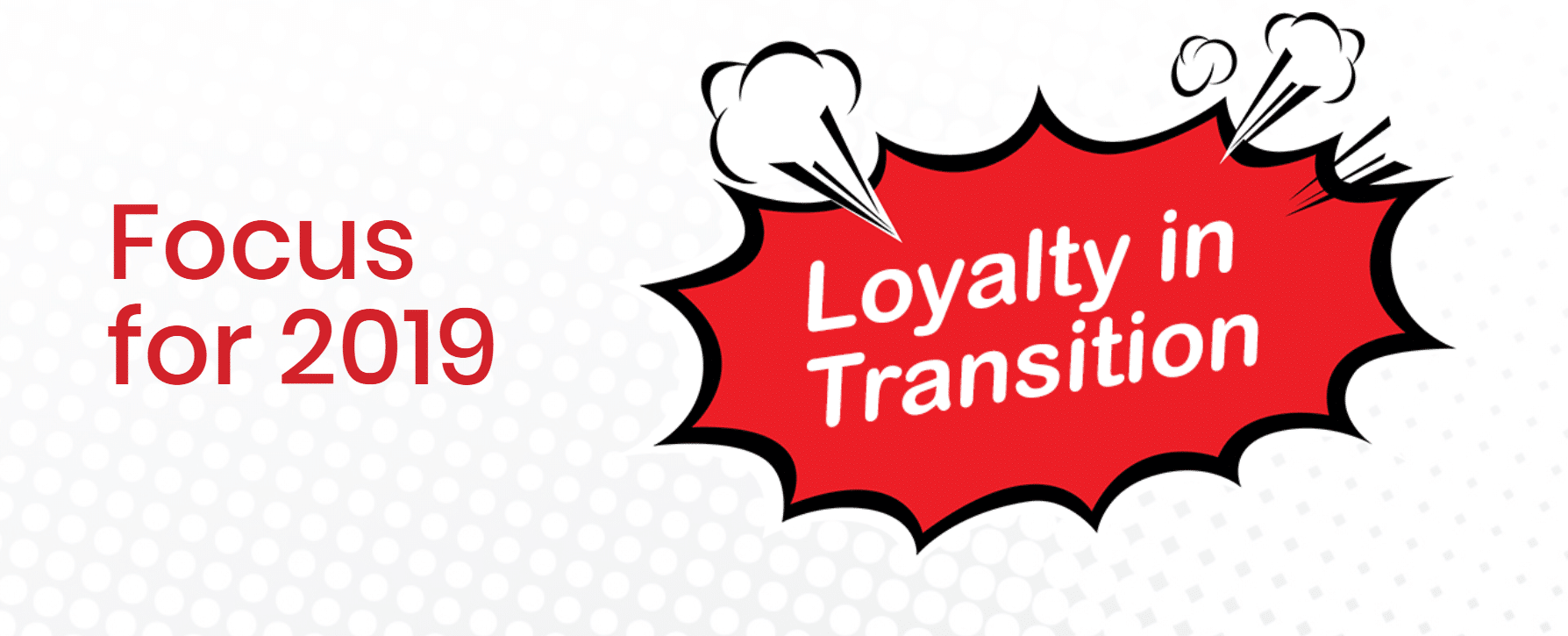The Loyalty Surgery’s theme this year is ‘Loyalty in Transition.’ Annich McIntosh, Editor & CEO of Loyalty Magazine Group, kicked off the conference talking about the exciting places that the industry is headed. A world of possibilities is opening up for loyalty marketers, fueled by the rise of exciting new technologies, ever more demanding and changing consumers, and the launch of new creative ideas.
By: Charlie Hills, Editor at Large for Wise Marketer and MD of Mando-Connect
One of the big themes that ran through all the discussions was the importance of emotional over transactional loyalty
Ties Top of M-Wise likened the industry challenge to the dating apps “there is always a better option in today’s world of choice”. He sees emotional loyalty as the key way that brands can create meaningful relationships with their customers:
- Driven by creative use of customer data
- Actionable insights
- Social listening
- And making it personal
He shared 2 playful Dutch case studies to illustrate the point of how emotional connection can drive true and valuable loyalty: Hunkemoller’s Passion Points and BP’s Freebees.
It was interesting to see that emotional loyalty isn’t one thing for every brand, or even every sector. Each brand that shared case studies had its own “emotional loyalty” model, but perhaps one of the best we saw was Cheetah Digital’s, shared by Sharon Forder, VP of Marketing for EMEA. It proposes that true emotional loyalty is a combination of 3 factors:
- Affinity
- Attachment
- Trust.
You have to get all three parts right, not just one.
A second big theme of the conference was the demise of the popularity of points
Pavel Los, Global Loyalty Programmes Manager for Shell said, “I believe we have to forget points. People don’t care about points, they care about value exchange.” He talked about the change from Shell Drivers Club to Shell Go+; arguably the most significant example in the world of a big programme ditching points. In 2018, the programme was working – for every $1 spent they got $1.23 back, so why change?
3 clear principles informed Shell’s big move:
- The experience has to be easy; “points aren’t easy, they are just another balance to manage.”
- The experience has to be rewarding; “points aren’t rewarding, saving up 2 years for a toaster you don’t want is not exciting.”
- The customer needs to feel appreciated; “this is where the special non-points stuff comes in, preferential treatment, and surprise rewards and offers.”
And so far, it’s really working – early data is showing that Shell’s bold move away from points has worked.
A third big theme was the rising importance of creating a truly great and differentiated customer and brand experience.
Michael Buffham-Wade, Director of Experience for Virgin, looks after a “mind-blowing” 50m Virgin customers, across 62 companies and is dealing with a brand that has 100% brand awareness in UK, (97% in the US), and is just about to celebrate its 50th birthday. He talked about how important it is to do “the non-points stuff, the fun things and random silly things expected of Virgin. We have to create offers unique to every person, based on their behaviours and preferences.”
Also Watch: A few minutes about UK Loyalty with Charlie Hills
Rob Chandler, Head of Customer Loyalty at Sky, also shared some extraordinary examples of how far the brand will go to create exceptional loyalty experiences for members as part of Sky VIP. From boxing with Anthony Joshua, to meet and greets with Will Smith, to behind the scene’s experiences at sporting events, movies, TV shows and more. Rob talked about Sky’s unique approach to loyalty: “73% of people believe that loyalty programmes should be about brands being loyal to them, but 66% of marketers believe the opposite. Sky flips loyalty on its head by demonstrating our loyalty to our customers, rather than demanding their loyalty to us.” A truly “only Sky can” member experience is critical to the immense success of Sky VIP – leveraging Sky’s and its carefully curated range of brand partners’ assets for maximum member engagement.
Fourthly, we learned about interesting new ways of measuring the impact of loyalty
With programme leaders going beyond traditional metrics, AS Roma shared their Fan Performance Index (FPI) model for their loyalty programme ‘Unico Grande Amore’. FPI uses data analysis and behavioural clustering of all fan interactions to assess the value of individual fans. The model looks at factors beyond spend, recency, and frequency to assess monetary value. It even looks at attitudes, social information, interactions, and even profile completion to assess FPI. They found, using this analysis, that one “best fan” (with an FPI of 30) is worth as much as 30 ordinary fans, an insight which has informed their whole approach. It was also interesting to see Motif’s 5 block model which uses 5 component parts to measure the effectiveness of a loyalty programme:
- Quality
- Value
- Sharing
- Closeness
- Magnetism
Programmes and brands can clearly no longer rely on traditional simplistic measures, and smart use of holistic data is critical to getting it right.
In only 2 days, the Loyalty Surgery covered a huge range of loyalty topics, case studies, trends, and discussion points. Is loyalty really in transition? Yes. Is this the best time to be working in loyalty? Also yes – and we are really excited to see what loyalty marketers achieve in the next 3-5 years and what this many faceted transition will look like. Bring it on!


